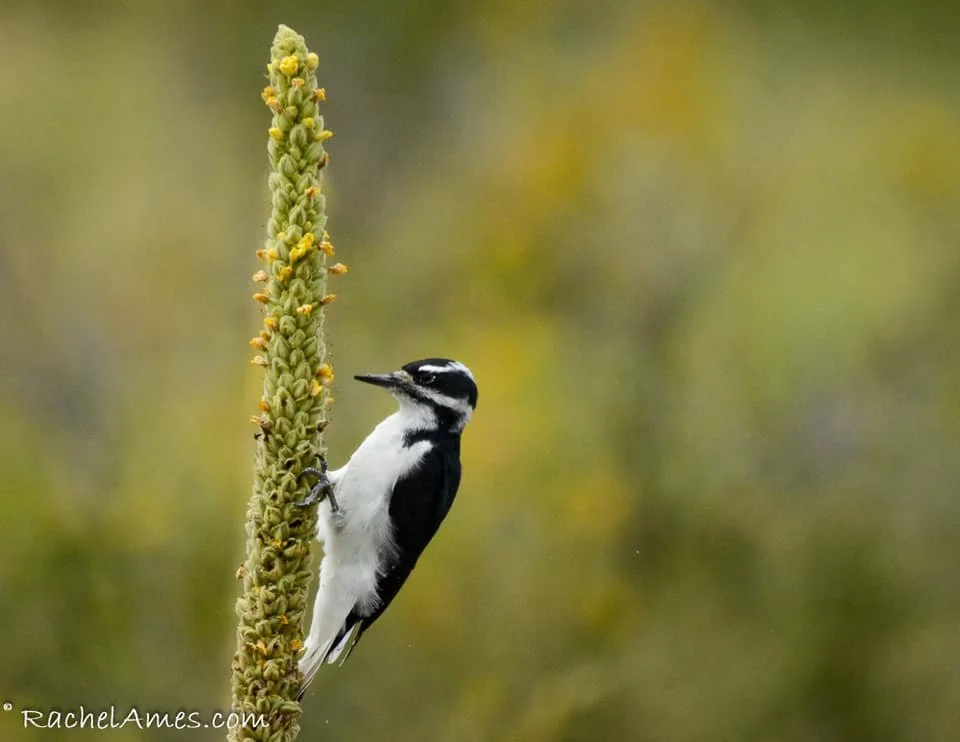From the archives: Feathered Friday - Downy and Hairy woodpeckers
by Rachel Ames
This week’s feature is about the similarities and differences between the Downy Woodpecker and the Hairy Woodpecker. These birds are found throughout the U.S. and southern Canada. No one knows exactly why the two species look so much alike even though they are not that closely related. Both species are black and white with stripes on the face, the males are usually bigger than the females and have a red (or sometimes orangy-yellow) spot on the nape. They both eat primarily insects that they find by tapping on the bark (to hear the tunnel cavities of bark beetles). In general, the smaller birds (Downy’s or female Hairy’s) will feed on smaller branches and bushes while the larger birds will dominate the larger trees. Both will come to bird feeders although feeding suet is not recommended. Both species and both sexes drum on trees to define and defend territories, and to attract mates. There are several major differences, however. The Downy Woodpecker is smaller overall, has a smaller beak (about half the length of the head), often has more feathers at the base of its beak, has barring on the underside of the tail feathers (that often look like spots from above). The call of a Downy is a sweet “pik” and the drum is fast and uninterrupted. The Hairy Woodpecker is about the size of a robin. They have a long beak that is about the length of their head, little to no barring on the tail feathers, a more pronounced “comma” over the shoulder, a harsher “peek” call and drum that is a little more varied and lower pitch. Can you spot the differences in these pictures? Which one do you see more often?
Male Downy Woodpecker. Note barring on tail feathers.
Male Downy Woodpecker.
Male Hairy Woodpecker.
Female Hairy Woodpecker. Note “comma” over the shoulder.
Female Hairy Woodpecker.
Male Hairy Woodpecker.
Male Hairy Woodpecker.







